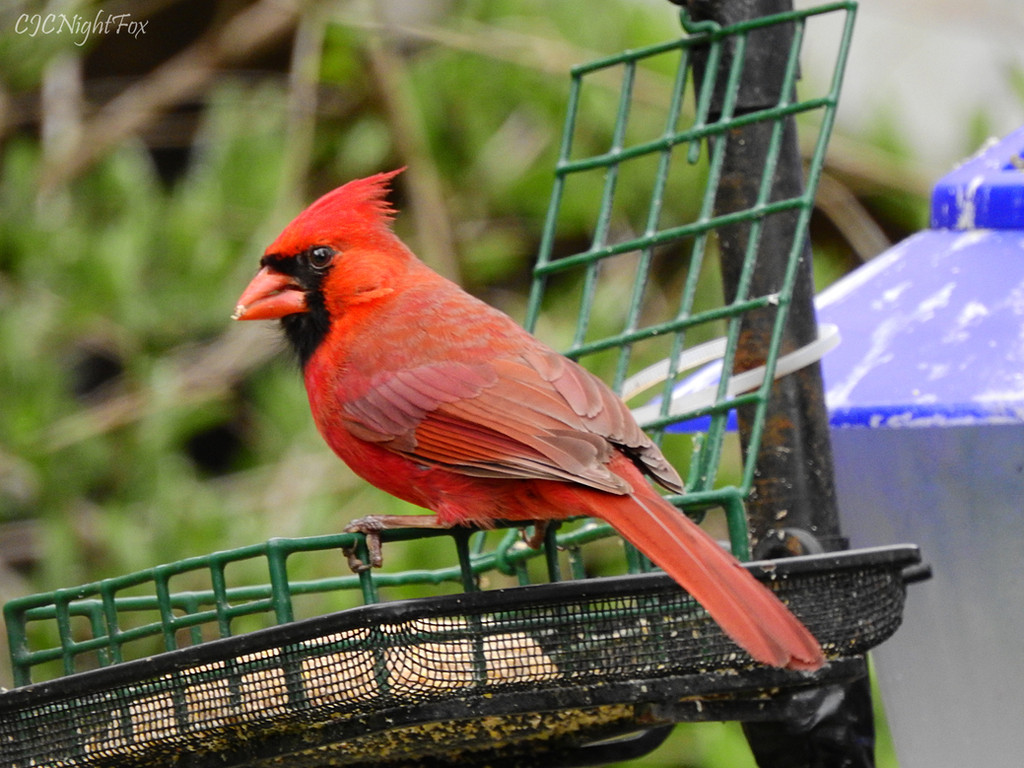HOME | DD
 CJCNightFox — Backyard Birding Tip 2: Feeders Made From What?
CJCNightFox — Backyard Birding Tip 2: Feeders Made From What?

#animals #bird #birds #birdwatching #blackbird #bluebird #cardinal #crow #dove #finch #hakw #nature #owl #raven #sparrow #wildlife #wildlifephotography #birdphotography
Published: 2020-02-11 18:24:22 +0000 UTC; Views: 347; Favourites: 30; Downloads: 1
Redirect to original
Description






 you do not have permission to use this photo
you do not have permission to use this photoMale Northern Cardinal
Wood, plastic, metal, glass; which is the best material for a feeder? There's plenty of choices and when deciding on what to get it really comes down to how safe the feeder is for the birds, how it will hold up in all weather conditions, and how well it can be cleaned. Starting with wooden feeders... to put it simply, feeders made from wood should just be avoided. No matter what type of wood the feeder is made from, wood will eventually grow mold, which is highly toxic to birds. Wooden feeders can't be treated or painted because it can leak those toxins and pose a risk to the birds' health, and unpainted or untreated wood is prone to mold or rot when exposed to a lot of rain or snow. Plus, wooden feeders can not be properly disinfected and cleaned, which can result in the spread of disease and illness. When using wooden feeders, they should just be replaced with new ones often. Moving on to plastic. The only real down side to plastic feeders is that they may crack easy when dropped or if they fall off the pole or hook, and are easily destroyed by squirrels. But plastic feeders are easy to clean and disinfect, they hold up well in all weather conditions, and they last a long time. Can't really go wrong with plastic feeders. Metal feeders are painted nice colors to protect it from rusting. But some paints can be toxic, and the paint can chip off. Birds may eat the paint chips which could be bad for their health, and leave a weak spot on the feeder that could rust. In the winter metal feeders will freeze up, and if a bird lands on it with wet feet, their feet may actually freeze the feeder and the bird can not free itself, which could lead to death or injury. But these cases are rare, as most metal feeders do have plastic perches. A well painted metal feeder may not pose this risk, as they are not coming in direct contact with the freezing metal. Metal feeders hold up well in all weather conditions, last a long time as long as they don't rust, and are easy to clean. Just be aware that just because they are metal doesn't mean they are squirrel proof. Squirrels can still chew apart the plastic perches, or even get the feeder top open. Glass feeders are the most beautiful feeders; they are colorful, reflect wonderful colors in the sun, and have beautiful designs. But glass feeders will break if they are dropped or if they fall off the hook, and broken glass is dangerous to all animals. The bright reflective colors may also scare some birds off, so when looking at glass feeders check the reviews to be sure birds aren't scared off by it. Glass feeders can't be taken apart, but are usually made so they can be cleaned without being taken apart. Avoid feeders that have a copper finish. Though they are beautiful feeders, copper is toxic to birds and can lead to birth defects and fertility problems.
Related content
Comments: 7

👍: 0 ⏩: 0

👍: 0 ⏩: 1

👍: 0 ⏩: 1


























